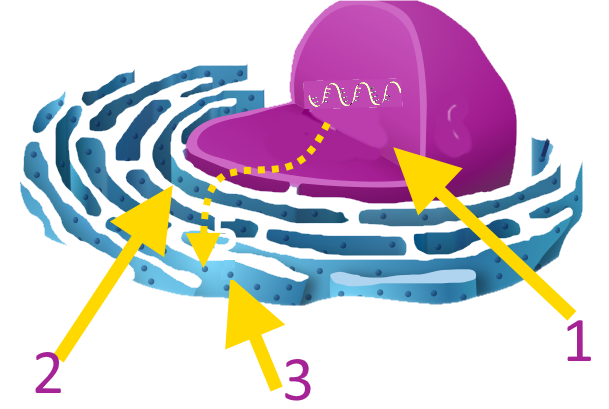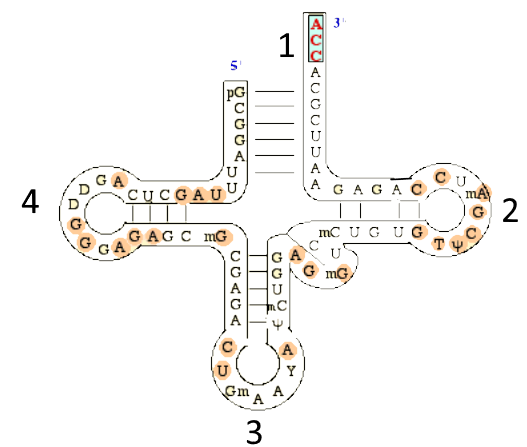





RNAm (messenger ribonucleic acid, see this ) passes inside the cell from the cellular nucleus (1) on the ribosomes (3) which are most often attached to the endoplasmic reticulum (2):

RNAt (transfer ribonucleic acids) derived like RNAm from DNA in the cell nucleus, are passed into the cytosol (cell fluid):
 :
:
These RNAts are partially folded and present 4 important regions: 1. "Acceptor" sequence capturing and fixing an amino acid whose nature depends on the structure of the tRNAt (in color: constant bases) 2. "T" loop that attaches to the ribosome 3. "Anticodon" loop which attaches to a well-defined portion of the mRNA with its complementary base codes. 4. "D" loop which attaches to the aminoacyl-trnasynthetase enzyme which in turn attaches amino acids in the correct order to form the protein encoded by mRNA.
For each amino acid there is a different Trnasynthetase which is . able to attach its amino acid to the protein in formation . which also manages to reject a false amino acid attached to its RNAt (which can happen for amino-acids of neighboring structures)!